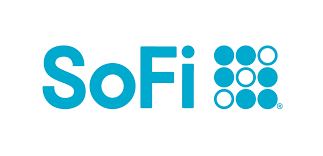In the early 1980s, you could buy a 3-month certificate of deposit (CD) and earn a rate above 18.00%, according to historical data from the Federal Reserve. That’s a very high rate.
In fact, many people are scrambling to buy CDs right now with rates above 5.00%. While today’s rates are at recent record highs, they’re obviously well below 18.00% — yet people are still excited about them.
One big question to ask, though, is whether those rates from the 1980s are ever coming back again or whether, like 1980s Zubaz pants, they are a relic of the past that is (hopefully) unlikely to return.
Why were rates so high in the 1980s?
CD rates were high in the 1980s for the same reason they’re up right now: inflation. Prices were surging in the years leading up to these unprecedented yields, with year-over-year costs going up 11.30% in 1979 and 13.50% in 1980. This was after a prolonged period starting in 1973 when costs rose at least 5.00% — and sometimes much more — each year.
Our Picks for the Best High-Yield Savings Accounts of 2024
|
SoFi Checking and Savings 
APY up to 4.60%
|
APY up to 4.60%
|
Min. to earn $0 |
|
CIT Platinum Savings 
APY 5.00%
|
APY 5.00%
|
Min. to earn $5,000 |
|
Capital One 360 Performance Savings 
APY 4.25%
|
APY 4.25%
|
Min. to earn $0 |
There were quite a few other economic issues going on between 1965 and 1982 as well, including four major recessions, wage and price controls being implemented during peacetime for the first time, and several energy shortages.
The Federal Reserve started raising interest rates during the 1970s and 1980s to try to cope with the inflation surges — much as it has done in the post-pandemic era. As the Federal Reserve raised rates back then, CD rates climbed. The same has happened recently as the Fed has repeatedly raised rates with the goal of fighting the inflation that may have been caused, in part, by stimulus spending during COVID-19.
The big difference is, while inflation has been at recent record highs, thankfully the economy hasn’t been nearly as bad as it was in the 1980s. In the worst year for price increases, 2022, costs rose 8.00% year over year. In 2021 and 2023, costs rose 4.70% and 4.10% respectively.
These aren’t good numbers, but they aren’t as devastating as the historic surges in the late 1970s and early 1980s. Since you can earn rates of upward of 5.00% in a high-yield savings account right now without giving up access to your money, you don’t have to lose ground to inflation.
Inflation also seems to be trending in the right direction, although it’s still higher than the Federal Reserve’s 2.00% target. So it’s not likely we’ll be seeing price increases of 11.00% or 13.00% any time soon.
Will CD rates ever go up to 18% again?
CD rates above 18.00% would be very bad news indeed, since it would mean inflation was far worse than it is now. The good news is, it’s not super likely that rates will ever go that high again, in part because the Federal Reserve has changed its philosophies.
The central bank was once focused primarily on fulfilling a mandate of trying to create full employment, even at the expense of rapidly rising prices. It now takes a more balanced approach and recognizes a commitment to price stability is essential. To that end, the Fed has adopted specific inflation targets and is less likely to make the kinds of decisions that would cause inflation to surge so much in the first place.
Of course, no one can predict the future. But if CD rates ever did climb so high, economic conditions would likely be so dismal that the chance to earn an 18.00% yield would absolutely be nothing to get excited about.
The bottom line is, today’s 5.00% rates are probably some of the best you’ll see for a long time. If you have money available that you can lock up for a while, buy a CD today to enjoy a yield that’s higher than it’s been in decades — rather than waiting for 18.00% rates to come back around.
These savings accounts are FDIC insured and could earn you 11x your bank
Many people are missing out on guaranteed returns as their money languishes in a big bank savings account earning next to no interest. Our picks of the best online savings accounts could earn you 11x the national average savings account rate. Click here to uncover the best-in-class accounts that landed a spot on our short list of the best savings accounts for 2024.
